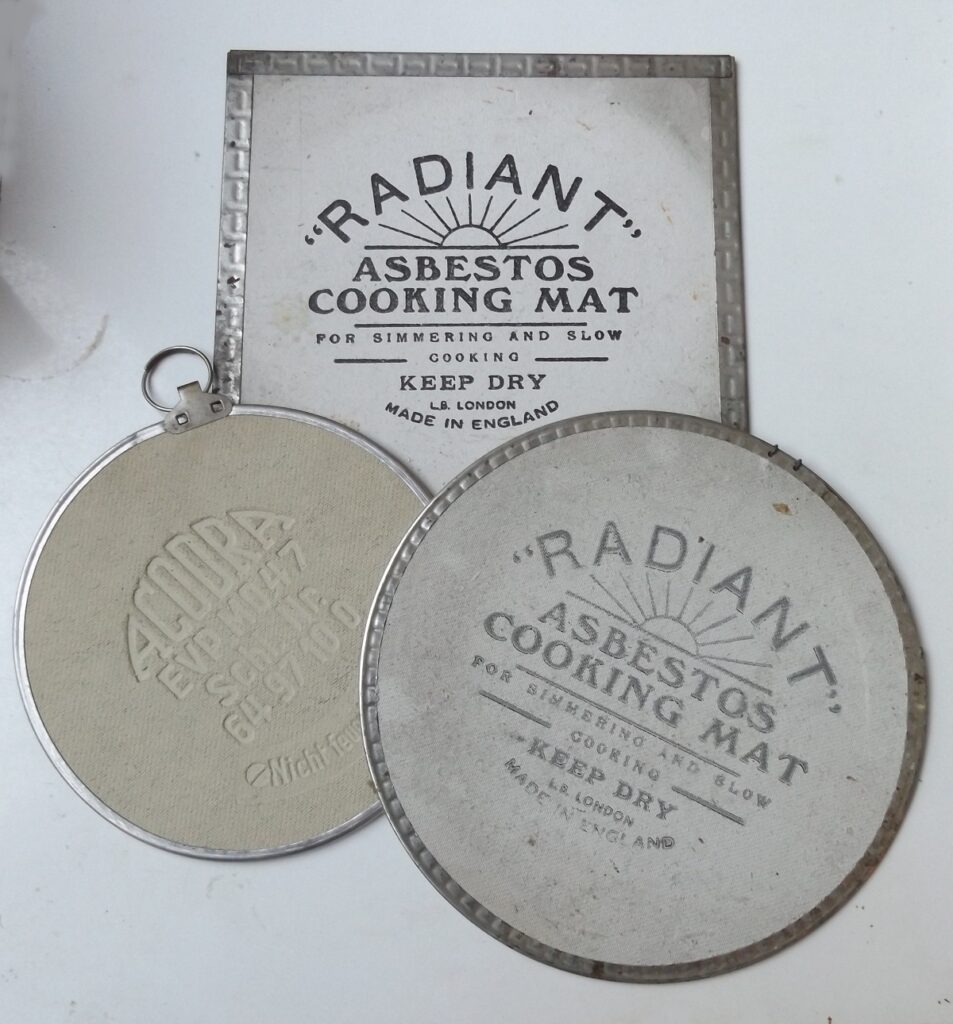Asbestos is a naturally occurring mineral which is made up of fibrous crystals. It is highly heat resistant, and therefore was long considered to be a ‘Miracle Mineral’ that was used to create a plethora of heat resistant and fireproof items. Not only was it found in an array of building and construction materials, such as concrete, plaster, and insulation sprays, it was also present in many common household objects, such as irons, cooking mats, and heating elements.
The Miracle Mineral
Alongside its use in construction, asbestos could also be spun into fabric. This was used to make fireproof materials which were then used in clothing and fire blankets. Asbestos curtains in particular became a huge asset for theatres. During the late 19th century, fires in theatres were a tragically common occurrence that killed thousands of people over the course of a few decades. As the majority of theatre fires broke out on stage (usually due to unprotected light sources), the introduction of asbestos stage curtains meant that the severity of theatre fires and the number of casualties dropped dramatically.
Asbestos fabric was also often used to cover cables on electrical appliances and in household wiring. Older homes in particular may still have wiring or pipework that is insulated with asbestos, and cable braiding found on old electrics present a particular problem because the cables are liable to fraying. Even until the 1980s many consumer products were made with asbestos, such as fire guards and cooking mats. Many plastics, particularly bakelite, were also made using asbestos to provide heat resistance in electrical items like radios and hairdryers.

One of the most prevalent uses for asbestos during the 20th century was in gas masks. Up until the 1960s, gas mask filters were made from asbestos. During the second world war, 38 million gas masks were issued to civilians throughout the UK, all using asbestos filters. Fortunately, most of these masks were never needed, as Britain never suffered a gas attack. However, those who worked in the factories producing the masks breathed in millions of particles of asbestos, which ultimately caused numerous respiratory problems decades later. For example, Doris Trimble died from oesophageal cancer in 2008, which was caused by her work at a gas mask factory between 1941 and 1943. Her family was awarded £48,000 in compensation.
Even today, gas masks pose a health risk. Wartime gas masks are often included in educational kits for schools, and many people still have vintage gas masks in their homes, unaware of the danger if they are put on or even handled too vigorously.
Early warnings Ignored
People first became aware of the dangers of asbestos during the early 1900s, when hospitals started reporting unusually high instances of early death in areas where asbestos mining was prevalent. As early as 1902, asbestos dust was included in a list of known harmful substances. However, these early findings were completely ignored, and asbestos continued to be mined and processed in enormous quantities. We now know that asbestos is a carcinogen; it causes mesothelioma, a cancer which mostly affects the lungs, and asbestosis, referring to long term scarring of the lungs.
In 1924, the first case of asbestosis was confirmed when 32 year old Nellie Kershaw was diagnosed with ‘asbestos poisoning’ by her local physician when she became too sick to work. Her employer, however, denied that asbestos was responsible for her illness, and refused to pay her a penny. Following her death, a formal inquest was launched and found that the development of asbestosis was irrefutably linked to inhalation of asbestos dust; 66% of those who worked with asbestos for 20 years or more suffered from asbestosis. The report led to the introduction of industry regulation of asbestos in 1931.
Further inquiries continued to demonstrate the long-term consequences of inhaling asbestos. A study of hospital records in England between 1919 and 1964 showed that over 50% of mesothelioma cases were caused by occupational exposure, or because the person in question lived with an asbestos worker. A further 16% of cases were in people who lived within half a mile of the just one asbestos factory. It was another 30 years until children exposed to asbestos from factories began to develop mesothelioma as adults.
Too Little Too Late
As with many other harmful substances, the government was slow to regulate the use of asbestos. Inspectors in 1975 found that many asbestos factories were not enforcing the 1931 regulations, and lax limitations on air quality control meant that by 1978, 1 in 10 asbestos workers were still developing cancers as a result of industrial exposure.There was no legislation protecting the general public from airborne asbestos until the late 1980s. Eventually, pressure from victims, the media, and members of parliament pressured the UK government to make asbestos completely illegal in 1998.
Sources and Further Reading
http://www.stagebeauty.net/th-frames.html?http&&&www.stagebeauty.net/th-tsafe.html
https://spartacus-educational.com/spartacus-blogURL124.htm
https://en.wikipedia.org/wiki/Asbestos
https://www.eea.europa.eu/publications/environmental_issue_report_2001_22/issue-22-part-05.pdf/view
https://en.wikipedia.org/wiki/Nellie_Kershaw
https://www.mesothelioma.com/asbestos-exposure/products/consumer-products/